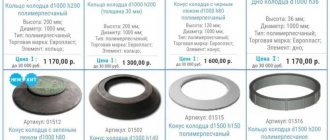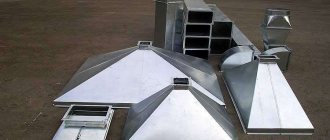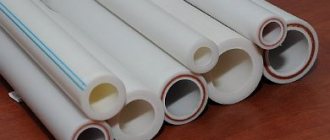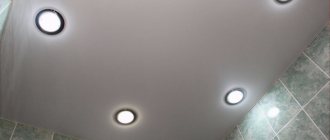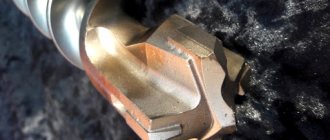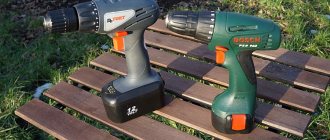One of the interesting new products in recent years on the market of household and professional tools has been the renovator or multitool. It is an electrically driven device capable of performing a large number of technological operations required in the process of construction, repair and processing of solid materials. Its versatility is given by interchangeable attachments of various shapes and purposes, performing oscillatory movements with high frequency with a small amplitude of movement. This article is devoted to their brief description and comparison of functionality.
Wood bits
Wood is one of the most common materials in construction and finishing work, and therefore wood attachments for renovators vary depending on the specific operation with wood:
- for cutting wood, a cutting disk of a spade-shaped, rectangular or other complex shape, called a saw blade, is useful - its functions include plunge-cutting or other sawing not only of wood, but also of other materials (plastic, soft metal, etc.);
- a segmented saw blade has the shape of an incomplete circle, often with a cut edge or with part of a segment of complex shape; sometimes manufacturers complete their multifunctional tools with a full-circle blade;
- for cutting work with wood, you may also need a depth limiter - with its help you can make cuts of certain sizes even without visual control, which will be especially important for hard-to-reach places;
- The rasp disk and sanding pad are used for rough processing of wood and removing large burrs.
Methods of fastening equipment
There are two options for attaching the equipment: using a screw clamp (using a hex key) and tool-free - the attachment is secured with a spring-loaded locking lever. The latter option is used on semi-professional and professional models.
A reference article based on the author's expertise.
Any man knows what an electric drill, hammer drill, grinder or screwdriver is. But the question of a renovator puzzles many. Let's figure out what type of work it is suitable for and how to choose the right multifunctional tool.
The renovator does not have a single, established name. Similar models went on sale not long ago, and even experts call them differently. If the reader hears such expressions as “vibro-gnaw”, multi-tool, oscillating grinder/tool, universal cutter, vibrating machine, multi-master, there is no doubt that we are talking about a renovator. Although these are not the only examples of how he is “called names.”
This tool can perform many different actions. Depending on the number and type of nozzles - several dozen. But it is worth considering that the renovator is not suitable for large-scale use, for example, at a construction site.
The scope of its use is restoration of something, minor repairs, finishing work, making various crafts, and so on. If chosen correctly, it alone replaces several household tools, and ensures more accurate operations. For example, cutting samples, shaped cutting of blanks, grinding, and so on. The capabilities of a specific renovator model are reflected in its passport (instructions).
All electric tools (and multitools are no exception) are divided into groups: household, semi- and professional.
You can purchase a renovator in different ways. Option 1 – buy the tool itself, and then the necessary attachments, at retail. But only from the same manufacturer! Option 2 – take the kit. But here the question arises - what does it include? Different models from different companies come with their own set of accessories.
Conclusion - before choosing a multitool, you should decide how intensively it will be used and what, in fact, it is needed for. When a tool is needed “for all occasions,” this is one thing, but if it is needed to perform a narrow range of specific tasks, it is another.
What's the point of spending money on a large set of accessories and a powerful machine if the house has such electric tools as, for example, an angle grinder () and a drill. This will result in duplication of individual functions.
How to choose a renovator?
Purchasing a tool should be considered carefully
It is recommended to pay attention to the following characteristics:
Type of food. There is mains and battery. For work in the workshop, the first option is suitable, and in all other cases the second. In any case, the optimal operating mode: 15 minutes. work and 10 min. recreation.
Power. The multitool network tool has a rating of 200-500 W. The battery for home use has a power of 12 W, and the professional battery has a power of 18 W.
Oscillation frequency. At high speeds they work with soft materials, at low speeds they saw and grind hard products.
Speed controller
Important for working with different materials that require different nozzle movements.
Maintains constant speed. Feature that helps you maintain the same pace of work
The installed constant electronics ensures a constant speed of work as the load increases.
Attaching the nozzle. Renovator is a device that has two types of connection: manual fixation with a key and a quick-release device. The first option is suitable if the nozzles are changed rarely, the second if they are changed frequently.
In addition, it is recommended to pay attention to the following additions to the renovator:
- electronic speed control;
- smooth start;
- Possibility of connecting to a vacuum cleaner;
- soft pads on the handle.
https://youtube.com/watch?v=Lf4tYPVzBPA%250D
Attachments for renovator
These consumables vary depending on the tasks assigned to them. The multifunctional tool can be equipped with the following types of attachments:
- triangular plate with Velcro;
- carbide pad for polishing;
- semicircular nozzles with diamond chips for metal and concrete;
- immersion sheets with teeth at the end;
- scrapers for scraping linoleum or silicone;
- knives with double-edged blades for scoring;
- attachments for attaching narrow blades and threads.
https://youtube.com/watch?v=Eq9TBqbFelw%250D
For cutting metal
One of the slowest jobs with a multifunctional tool is cutting metal parts. In terms of the speed of “biting” into the material, the renovator is several times behind the grinder, so for such purposes it is used only in the most extreme situations. Typically, a multitool is used to cut protruding nails flush, drywall profiles, small pipes (up to 30 mm) or damaged car body parts. To work with metal more or less confidently, the tool must have at least 300 W of power, otherwise it will jam and heat up.
What a multitool can do
Here are some MFI opportunities:
- cable channels are being installed for them;
- cut installed sewer pipes and internal wall reinforcement;
- remove deposits of plaster, glue, polyurethane foam, and clean off paint;
- peel off linoleum from the floor;
- file nails and screws flush;
- remove grooves in wood and drywall from the end and mortise (submersible);
- cut sheet elastic materials and soft seals;
- trim skirting boards, fillets and cornices in place;
- unstitch the seams on the laid tiles and cut the tiles themselves;
- trim installed door frames;
- grind complex surfaces and hard-to-reach internal corners;
- sharpen tools.
Let us now clarify what a renovator is. Professionals give it the following definition: a tool of last resort. It is indispensable as an auxiliary construction tool at the final stages of work or during remodeling. And when used at home, a multitool will completely save you from buying several power tools.
Comments2 comments
- Anton:
04/04/2017 at 08:56Despite the fact that the renovator is a universal tool, there is no need to consider it as a professional one, since it is only suitable for home needs. We bought a renovator and are happy with it so far, but only if we use branded attachments and not Chinese ones. Chinese ones are suitable for working on wood and plastic, but for metal and tiles you only need branded attachments. For carpentry work, this is an indispensable thing; for working in corners, it’s just a super find; it’s great for removing varnish, old paint, and sanding. I can’t say anything about durability and reliability; we haven’t been using it for long.
- Igor:
07/30/2017 at 19:07
There are differences from advertising. The noise is like a circular machine. It wakes up the dead. Vibration like a sander. The possibilities are not great.
Types of multitools
This type of tool is divided into different options according to many criteria. According to the type of power supply, a universal tool can be:
- Rechargeable
. A stand-alone option that can be used anywhere you need. - Network
. Allows you to use the device for as long as you want, but due to the wire it has restrictions on movement.
According to power level, the division occurs into:
- household – up to 100 W;
- semi-professional – up to 300 W;
- professional – above 300 W.
By type of attachment attachment:
- using a hex key;
- modern clamps;
- thanks to the universal adapter.
Which renovator is better, corded or battery-powered?
These two types have both advantages and disadvantages. Before making your final choice, you need to get to know them in more detail. The battery renovator has the following advantages:
- Ability to work autonomously anywhere you need. An additional convenience is the absence of a cable, which not only interferes with work, but also limits movement.
- The tool makes little noise.
Network renovators have the following advantages:
- Electrical operation allows you to use the tool for the desired amount of time without any worry about turning off at the wrong time.
- The tool is equipped with a high-power motor, which helps it work faster.
- At the same time, such a renovator weighs less, but needs rest to avoid overheating and, as a result, failure.
- The compactness of the case helps to use the device in the most difficult to reach places.
For grinding surfaces
If you do not take into account attachments for grinding rough rocks, you can note at least 2 types of similar equipment for softer materials. The first option involves gluing the sanding sheet onto a special base, and the second is a clamp into which the same abrasive sheet is installed, but without any glue. The version with fasteners has a cone shape and is intended for grinding grooves. For smooth surfaces, use a sanding sheet on a flat base. For more delicate cleaning and polishing operations, there are special sponges and felt attachments.
To make sanding sheets clog less, you should choose copies with holes made. In combination with a dust collector, such attachments will be even more effective and the workplace will be cleaner.
Nuances of choice
Depending on the manufacturer and supplier, the equipment of a multifunctional tool can be supplemented with interchangeable attachments for one purpose or another. Among them there may be additions that are identical in purpose, differing only in dimensional parameters, or removable elements designed to perform work of a different nature.
When purchasing a renovator, it is important to pay attention to the quality of the tool itself. The duration of its uninterrupted operation will depend on the name of the manufacturer and the originality of the brand indicated on the specific packaging
The presence of an initial list of attachments is explained by the manufacturer’s desire to attract potential customers. Therefore, when purchasing a renovator, it is worth taking this fact into account and having the opportunity to purchase replacement elements from a third-party manufacturer.
First of all, it is worth determining the name of the target work, the implementation of which will be carried out using a multifunctional tool. This will save money on the purchase of add-ons and also ensure the best production workflow.
It should also be remembered that in order for the renovator to carry out the same working manipulation, nozzles of various configurations, classes and sizes can be used. Taking this into account, it is necessary to make a detailed assessment of the proposed work and draw appropriate conclusions in favor of one or another attachment.
In some cases, the right solution would be to purchase a specialized set containing renovator additions for various purposes. This is relevant for those who are engaged in construction and other technical work on an ongoing basis.
Attachments produced by multifunction tool manufacturers as a separate product line have better quality characteristics than complete items.
In this regard, it is worth paying attention to individual units and sets of add-ons supplied by reputable companies
High quality class:
- Bosch;
- Hilti;
- Makita.
Average quality class:
- "Interskol";
- "Bison";
- "Specialist".
Before purchasing a renovator or a removable addition to it, you need to familiarize yourself with the list of their modifications and target properties.
Nozzles designed for sawing soft materials (wood, plastic, composite and others) are equipped with teeth, the size of which may vary depending on the shape of the nozzle and its purpose. The location and shape of the teeth do not suggest the presence of a divorce. Common configurations of such add-ons are shown in the photo.
There are nozzles for concrete and metal. Their working properties are ensured by a diamond cutting edge consisting of high-strength components. They come in saw and plunge-cut types. The latter allow you to cut closed holes in concrete, metal and ceramics while maintaining high accuracy. Some options for such attachments are shown in the photo.
For processing wooden and other soft surfaces, nozzles in the shape of a triangle are used, the sides of which have a rounded profile. They can be equipped with a non-removable abrasive coating, as well as a special Velcro, which allows you to replace the sanding cloths with cloths of a different grain size without changing the attachment itself.
When choosing removable attachments for a renovator, you need to take into account the compatibility of certain attachments with the fastening mechanism of this tool. Its models, produced by different manufacturers, can be equipped with fastening mechanisms with individual design characteristics inherent in the devices of this manufacturer.
In their list, one can note the presence of a description of the functional features of the add-on, information about the manufacturer and supplier, dimensional characteristics, which determine the possibility of use in combination with a particular model of the renovator.
To learn how to choose a renovator and what to look for when purchasing, watch the following video
General recommendations
When creating homemade knives that are installed in grain crushers, it is recommended to use only metal characterized by a high level of strength. At a minimum, such a metal should not be inferior in its characteristics to St-3 steel.
During constant operation of the grain crusher, the knives will gradually become dull, and the quality of crushing will no longer be satisfactory. You can correct the situation by simply sharpening the knives again. This procedure is not accompanied by difficulties.
However, some craftsmen may still make a mistake when creating the unit by securing the knives “tightly”. This error will not allow you to remove the knives to sharpen them or replace them if they have completely exhausted their service life.
READ Choosing an angle grinder with speed control
For this reason, it is highly recommended to secure the knives so that they are securely locked, but can still be removed if necessary.
A structural element such as a sieve must also be removable. This will allow it to be removed periodically and thoroughly cleaned.
You should always remember safety precautions when operating a homemade unit. Leaving a working mechanism unattended is not allowed.
Grain crusher
A grain crusher is made of a round drum (from a broken or old crusher) with a perforated removable bottom, a plastic muzzle (from an ordinary canister with the bottom cut off) and a grinder - the leading element of the structure. The angle grinder shaft is placed into the drum through a hole in the center of its upper part. In this position, its body is attached to the drum (the method of attachment is individual). A screw-shaped knife is attached to the gearbox shaft from inside the drum. It can be made from a cutting wheel on a wood circular saw. The knife is secured with a fastening nut.
A plastic hopper for loading grain is also installed in the upper part of the drum body. Grain is fed through it and falls onto a rotating knife. The latter is crushed and poured out through the perforation of the bottom. The size of the grinding fraction depends on the size of the holes in the bottom. The photo below shows a model of a homemade grain crusher and drawings for its manufacture.
Branch chopper
A branch and grass chopper is a garden device that allows you to turn small branches and thick-stemmed weeds into a fine-grained form used for various agricultural purposes. When making such a tool, you should use only a large grinder operating at high speeds. To prevent overloads and damage to the angle grinder, an additional gear system is used, which greatly increases the grinding effect. The device is mounted on a durable metal frame that can withstand large vibration and displacement loads. Such a device is shown in the photo below.
Making a nozzle for a renovator with your own hands
The described method allows you to make an excellent, durable saw for wood and plastic; more about metal a little later.
1. We buy a high-quality woodworking hacksaw with a fine tooth in the store. As a rule, it has high quality steel and, most importantly, a wide blade, which allows us to fully restore the nozzle, including its length.
2. Mark the hacksaw blade along the width of the nozzle and cut it into blanks using a grinder. This saw will make 7 of them.
3. Cut off the working part from the original nozzle.
4. Mark and drill 2 mounting holes in it. First we use a 1.5 - 2 mm drill.
5. We release the back part of the blanks from the file, heating it with a gas burner until it glows crimson and allowing it to cool in the air.
6. We mark the holes, aligning them with the prepared part of the standard nozzle, and drill them, using drills sequentially: first, the same as when drilling the shank of the nozzle, and then with a diameter of 6 mm. Using the same drill, we enlarge the holes in the shank.
7. After drilling and marking, we bend the released part of our blanks to an angle slightly less than that of the standard tool. We connect both parts using short M6 bolts - the angle will be leveled.
Such an attachment will serve you for a long time no worse than a standard one from a good manufacturer; it will cost at least 5–6 times less, taking into account the cost of a hacksaw and 6 spare working surfaces. And it will do its job just as well as a purchased one, or even better.
Yes, do not forget about the possibility of repeated sharpening, which is provided by the manufacturer of the hacksaw that served as the donor of the blades.
Lastly. For metal, you can also take a good hacksaw blade, cut it into pieces and carefully weld it to the base, removing the worn part
Here it is important to weld the blade with teeth efficiently and without overheating and carefully process the thickness of the seam
Dear readers, if you have any questions, please ask them using the form below. We will be glad to communicate with you
